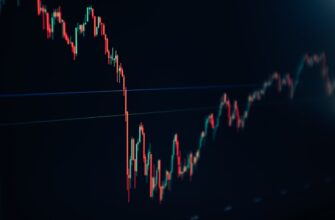Peer-to-peer (P2P) trading has become a cornerstone of the cryptocurrency ecosystem, offering users flexibility and direct control over transactions. Among stablecoins, Tether (USDT) dominates P2P markets due to its liquidity and 1:1 peg to the US dollar. However, the P2P rate for USDT often differs from exchange rates, creating opportunities and challenges for traders. This guide explores how P2P rates for USDT work, factors influencing them, and strategies to secure the best deals.
## What Is the P2P Rate for USDT?
The P2P rate for USDT refers to the price at which users buy or sell Tether directly with other individuals on decentralized platforms like Binance P2P, LocalBitcoins, or Paxful. Unlike centralized exchanges, P2P platforms let traders set their own rates, leading to price variations based on:
– **Supply and demand dynamics** in specific regions
– **Payment method preferences** (e.g., bank transfers vs. mobile money)
– **Trader reputation and transaction limits**
– **Market volatility** affecting crypto prices
For example, during high Bitcoin volatility, USDT demand may surge, causing P2P rates to rise above $1.02. Conversely, oversupply in a region could push rates below $0.98.
## 5 Factors Influencing P2P Rates for USDT
1. **Geographic Demand Variations**: Countries with strict capital controls (e.g., Nigeria, Argentina) often see USDT trade at premiums due to high demand for dollar-linked assets.
2. **Payment Method Fees**: Sellers may adjust rates to offset processing fees. Bank transfers typically offer lower premiums than gift cards or mobile money.
3. **Market Volatility**: Sudden crypto price swings drive traders to USDT, tightening supply and raising P2P rates.
4. **Platform Competition**: Rates vary across platforms; Binance P2P often has narrower spreads than smaller exchanges.
5. **Regulatory Changes**: Bans or restrictions on crypto can create regional arbitrage opportunities.
## How to Get the Best P2P Rate for USDT: 6 Tips
Follow these strategies to optimize your trades:
1. **Compare Multiple Platforms**: Use aggregators like CoinMarketCap or Coingecko to track rates across exchanges.
2. **Time Your Trades**: Trade during peak liquidity hours (e.g., 8:00–10:00 UTC) when more sellers are active.
3. **Use Limit Orders**: Set target buy/sell rates instead of accepting market prices.
4. **Leverage Low-Fee Payment Methods**: Opt for bank transfers or PayPal to avoid steep premiums.
5. **Build Seller/Buyer Reputation**: High-rated traders often get priority in rate negotiations.
6. **Monitor Market News**: Regulatory announcements or Tether-related updates can impact rates.
## Risks of P2P USDT Trading and How to Mitigate Them
While P2P platforms offer flexibility, they also pose risks:
– **Scams**: Fraudulent buyers/sellers may reverse payments after receiving USDT.
– *Solution*: Use escrow services and trade with verified, high-reputation users.
– **Price Swings**: USDT’s rate can drop mid-transaction during market crashes.
– *Solution*: Complete trades quickly or use platforms with price-lock features.
– **Platform Dependency**: Some exchanges freeze accounts during disputes.
– *Solution*: Diversify across multiple P2P platforms.
## FAQ: P2P Rates for USDT
### 1. Why is the P2P rate for USDT different from the market price?
P2P rates reflect local supply/demand and payment processing costs, unlike centralized exchanges that follow global market averages.
### 2. Is P2P trading safe for USDT transactions?
Yes, if you use reputable platforms with escrow and user verification. Avoid off-platform deals.
### 3. Can I negotiate P2P rates for USDT?
Some platforms allow rate negotiations, especially for large transactions (e.g., $5,000+).
### 4. Do P2P USDT trades have tax implications?
In most countries, crypto trades are taxable. Consult a tax professional for compliance.
### 5. How do I convert USDT to fiat at the best rate?
Compare rates across platforms, choose low-fee payment methods, and trade during high-liquidity periods.
By understanding these dynamics, traders can navigate P2P markets effectively, leveraging USDT’s stability while maximizing returns.








